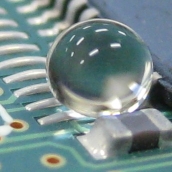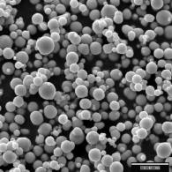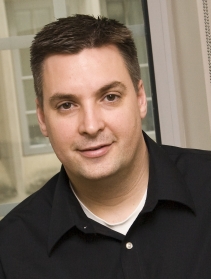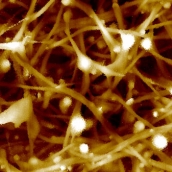|
Join us for a webinar to learn about one of the cutting-edge applications of nanoscientific research:
Biomedical Investigation Methods
and Nanomaterials
Join us for a series of lectures featuring materials sciences expert Professor Rigoberto Advincula of Case Western Reserve University! With considerable expertise in the design, synthesis and characterization of new polymers and nanoscale materials, Prof. Advincula has designed a series of lectures in order to share the latest developments in nanomaterials research in a variety of applications and fields.
Theranostics is a word that combines therapy and diagnostics. More popularly, it defines a class of agents that are able to diagnose a particular disease or disease marker and deliver its payload or by itself act as a drug. Biomaterials evoke biocompatibility, biomechanical, tissue engineering, physiological, and electrical concepts that enable monolithic or alloyed materials to be incorporated in the human body. Surfaces are another important application since these object surfaces are exposed to cell-adhesion, bio-fouling, and tissue growth.
This webinar will review a number of biomedical investigative methods and tools that focus on surfaces and nanoparticles to enable the creation of new theranostic agents and smart devices. Scanning probe microscopy (SPM) is an important method for biomedicine since it enables direct morphological characterization with soft materials.
 Presented by Prof. Rigoberto Advincula Presented by Prof. Rigoberto Advincula
Macromolecular Science & Engineering, Case Western Reserve University
About Prof. Rigoberto Advincula
Prof. Rigoberto Advincula, Director of the Petro Case Consortium, is recognized industry-wide as an expert regarding polymer and materials challenges of the oil-gas industry. He is currently a Professor with the Department of Macromolecular Science and Engineering at Case Western Reserve University and is the recipient of numerous awards including Fellow of the American Chemical Society, Herman Mark Scholar Award of the Polymer Division, and Humboldt Fellow.
Register by clicking session below:
Thursday, January 14, 2015
ONLINE REGISTRATION PAGE
- PDT (UTC-7): 9:00 AM - 10:00 AM
- EDT (UTC -4): 12:00 PM - 1:00 PM
- BST (UTC +1): 5:00 PM - 6:00 PM
|
|
|
Webinar Details
|
|
Date:
Thursday, Jan 14, 2016
Time:
9:00 am – 10:00 am (PDT)
San Francisco, Los Angeles
12:00 pm – 1:00 pm (EDT)
Cleveland, New York
5:00 pm – 6:00 pm (BST)
London
|
|
|
|
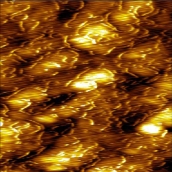
|
|
AFM image of DNA deposition onto ultrathin films
AFM is used to study the conformation and adsorption of DNA onto a series of ultrathin film layers
|
|
|
System Requirements
GoToMeeting
PC-based attendees
Windows® 7, Vista, XP 2003 Server
Mac-based attendees
Mac OS® X 10.5
or newer
|
|








